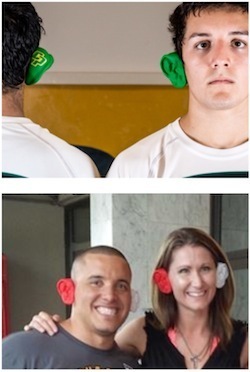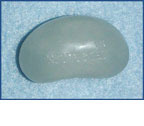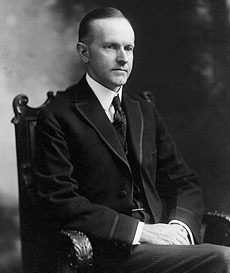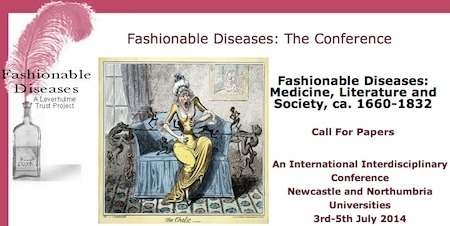Marc Abrahams's Blog, page 429
January 25, 2014
We will donate a heap of Improbable Research to your school (or your whatever)…
If you want to startle your students (or colleagues, patients, or other good people) by making them LAUGH then THINK, we have a heap of Improbable Research for you to give them. For free. You need only be able to come get these things, soon.
WHY: Because of impending mega-reconstruction in our building, we find ourselves having to jettison several stacks of historic (yet pristine!) paper copies of the Annals of Improbable Research (AIR). We want to donate these splendid magazines to people and institutions who/that will put them to improbable use.
HOW: IF you would like a small or medium-size stack of free copies of assorted issues of Improbable Research for your school, lab, hospital, or other educational or research or medical or tech entity — AND you can have someone pick them up at our office in Cambridge, Massachusetts before the end of this month (January 2014) —THEN please get in touch with us ASAP!

His cool appraisal of cold-showers-and-loneliness research
Dan Simons, psychology professor and Ig Nobel Prize winner (together with Chris Chabris, for the invisible-gorilla study) casts a cool, appraising eye on a cold-shower-and-loneliness study, and looks at the way other investigators have looked at that study. Simons writes, on his blog:
Replication, Retraction, and Responsibility
Congrats/thanks to Brent Donnellan, Joe Cesario, and Rich Lucas for their tenacity and perseverance. They conducted 9 studies with more than 3000 participants in order to publish a set of direct replications. Their paper challenged an original report (study 1 in Bargh & Shalev, 2012) claiming that loneliness is correlated with preferred shower temperatures. The new, just-accepted paper did not find a reliable correlation. Donnellan describes their findings and the original studies in what may be the most measured and understated blog post I’ve seen. You should read it.
The original study had fewer than 100 subjects (51 from a Yale undergraduate sample and a replication with 41 from a community sample), underpowered to detect a typical effect size in a social psychology experiment. But there are bigger problems with the original results.
According to the description in Donnellan’s post, the data from the Yale sample were completely screwy: 46/51 Yale students reported taking fewer than 1 shower/bath per week! Either Yale students are filthy, or something’s wrong with the data. More critical for the primary question, 42/51 Yale students apparently prefer cold (24 students) or lukewarm (18 students) showers. How many people do you know who prefer cold showers to reasonably hot ones? Again, something’s out of whack….
I would encourage Bargh [pictured here] to issue a public explanation (accessible to the whole field, not just an email thread) for the data issues in their original study. The problems could well have been an accidental coding or interpretation problem, and mistakes are excusable even if they do undermine the claims. More importantly, he should retract the original study (not the whole paper, necessarily — just the study with problematic data) and issue an erratum in the journal. Out of curiosity, I would like to see an explanation for why the study was not retracted immediately upon learning of the problems more than a year ago. Perhaps there is a good reason, but I’m having trouble generating one. I hope he will enlighten us.
A copy of the original study, as published, is available on Professor Bargh’s web site.

Co-author Idit Shalev [pictured here], based at Ben-Gurion University of the Negev, also authored, alone, a study about dryness, thirst, and consumer behavior:
“Implicit energy loss: Embodied dryness cues influence vitality and depletion,” Idet Shalev, Journal of Consumer Psychology, epub 2013. Professor Shalev explains:
“Consumers have long recognized that thirst motivates beverage consumption, however little is known of the consequences of dryness-related cues and experienced energy. Based on the embodied cognition view (Landau et al., 2010; Meier et al., 2012) and motivational perspective for energy (Clarkson, 2010; Inzlicht & Schmeichel, 2012), four studies examined the idea that activation of different levels of the dryness–thirst metaphor (e.g., semantic primes, visual images, or physical thirst) will influence perceived energy…. Overall, the findings suggest that physical or conceptual dryness-related cues influence perceived energy and may have consequences on consumer behavior.”
BONUS (possibly unrelated): A shower scene from a popular movie:

For Burns Night: Til All the Drip Dries Up
For Burns Night, again this year, we remind you about this song: “Till All the Drip Dries Up (The Doctor’s Woeful, Skinny Spouse)“:
Till All the Drip Dries Up (The Doctor’s Woeful, Skinny Spouse)
by A.S. Kaswell (with apologies to Robert Burns)
(NOTE: this can be sung to the tune of “Auld Lang Syne“)
O, my love’s got a red, red nose
That’s never grown immune
To any sort of malady,
Especially in June.
You’ll soon get well, my boney lass.
Now please dilate your eye,
And I will give you drops, my Dear,
To help your nose go dry.
Till all the drip dries up, my Dear,
And all the swelling goes,
Relax — the likelihood is nil
That you will decompose.

Seeing Red, So to Speak and Maybe More or Less
Some psychologists say that people see more in the color red than just the color. This study follows in the tradition of seeing things this way:
“Extending Color Psychology to the Personality Realm: Interpersonal Hostility Varies by Red Preferences and Perceptual Biases,” Adam K. Fetterman [pictured here], Tianwei Liu, Michael D. Robinson, Journal of Personality, epub 2014. (Thanks to investigator Neil Martin for bringing this to our attention.) The authors, at North Dakota State University, USA and Knowledge Media Research Center, Tübingen, Germany, explain:
“It was found that: (a) a preference for the color red was higher as interpersonal hostility increased, (b) hostile people were biased to see the color red more frequently than non-hostile people, and (c) there was a relationship between a preference for the color red and hostile social decision-making.”
BONUS: Co-author Michael D. Robinson is co-author also of this work about a possible non-red influence of hostility:
Meier, B. P., Wilkowski, B. M., & Robinson, M. D. (May, 2009). “Hotheaded” is more than an expression: The embodied representation of anger in terms of heat. Paper presented at the annual meeting of the American Psychological Society (APS), San Francisco, CA.
BONUS: Why seeing red may be a load of bull

January 24, 2014
3 Unexpected By-Products of (both real and fake) Luwak Coffee
The cost and caché of “the world’s most expensive coffee” — kopi luwak — has created at least three related industries.
BACKGROUND: Long-time readers might recall that Kopi Luwak is made from coffee beans that have been partially digested by the Asian Palm-Civet (Paradoxurus hermaphroditus); an animal that cherry picks only certain fruits (some say, perfectly ripe and ready fruits) from from coffee plants. The fruit is fully digested, but the bean inside is excreted, unharmed but slightly changed from its digestive trip. Those beans are then cleaned, roasted, and sold as “kopi luwac” (literally, “civet coffee”). This product was the subject of the 1995 Ig Nobel Prize in Nutrition. Food-Science Professor Massimo Marcone’s book, In Bad Taste: The Adventures and Science Behind Food Delicacies is a good source on this and related topics.

Asian Palm Civet (photo by Praveenp, 2009)
First: Coffee growers eager to supply the lucrative demand for this product have been capturing and caging civets so they can farm luwak coffee in volumes that simply could not be achieved by seeking civet-scat in the wild. In reaction to this, there have been several anti-cruelty campaigns aimed at luwak coffee.
Second: Some sellers mix beans that have never seen the inside of a luwak into their coffee, but still call their product kopi luwak and claim that it is harvested from luwak scat. Reaction to this practice includes the book, “Don’t Buy Kopi Luwak Coffee Before You Read This Book“, for people who have “…ever felt disappointed or cheated because of fake kopi luwak or because kopi luwak beans were mixed with other coffee beans.”
Also in reaction to this practice, scientists from Osaka, Japan, and from East and West Java, Indonesia have developed a biochemical test that they believe can distinguish whether a sample of coffee beans ever traveled through the digestive track of an asian palm-civet. Their paper was published in the July 2013 issue of the Journal of Agricultural and Food Chemistry.
The paper does not mention how much it would cost to perform this test on what was already the “most expensive coffee in the world”. If the results are positive, you still would not know whether that civet who processed the beans was caged, free-range, or wild.
Third: The success of these coffee growers has inspired others, such as “Black Ivory Coffee“, which has been through the digestive system of an Elephant.
BONUS PRODUCT: There may be some consumers who want their coffee to be expensive and to have been eaten by an animal, but are not comfortable with some aspect of civet or elephant pooped beans. For these people there is Monkey Parchment Coffee. The Rhesus monkeys involved eat the coffee cherry and spit out the coffee bean, leaving only teeth marks and perhaps some saliva on your costly grounds.

Dour President Calvin Coolidge and the sex life of a rat
Richard Stephens, who is both a psychology professor at Keele University and an Ig Nobel Peace Prize winner (for his study ”Swearing as a Response to Pain,”), explains the famous Coolidge Effect. Stephens writes, in his blog:
The Coolidge Effect and the sex life of a rat
John Calvin Coolidge Jr. was the 30th United States president, holding office from 1923 to 1929…. A renowned leader whose reputation has remained strong to this day, one of Coolidge’s more obscure legacies was the lending of his name to a psycho-biological phenomenon – thanks to a singularly trivial event.
The story goes that President Coolidge and his wife were being shown around a farm. For some reason they became separated, viewing different parts of the farm at different times. At the chicken yard, Mrs Coolidge observed a rooster mating very actively and asked how often this occurred. She was surprised to hear it was dozens of times a day and joked that the staff should tell the president when he came by. When the president’s party later arrived, the farm staff duly recounted his wife’s observations concerning the rooster. President Coolidge demonstrated a keen sharpness of mind when he asked the simple but revealing question of whether the cock was mating with the same hen every time. On hearing to the contrary the President suggested the staff might mention that to Mrs. Coolidge.
The Coolidge Effect, named after the 30th President of the United States, is concerned not with industrial relations, economics or outstanding leadership. Rather, it concerns an aspect of sexual behaviour. Specifically speaking, it denotes the observation, which holds for many species, that males will be more eager to mate with a new female, as opposed to one that is familiar.…
BONUS: Few American citizens (other than psychologists) know that Calvin Coolidge is associated with the Coolidge Effect. Coolidge has a reputation for being dour and terse, and little else.
BONUS: Video of “Diferences in Sexual Behavior Pattern (rats)” [sic]:

‘Shoe-smell’ to control epilepsy – myth or reality?
 Dr. Harinder Jaseja, who is Associate Professor of Physiology at the Gajra Raja Medical College, Gwalior, India, has undertaken one of the very few studies investigating the efficacy (or otherwise) of ‘shoe smell’ to control epileptic attacks. Out of a group of 32 epilepsy sufferers, 3 were given the opportunity to use the smelling shoe-smell treatment. There was some indication that the smellers’ epileptic attacks tended to be shorter than the non-smellers. However, the professor issues a strong caution regarding the interpretation of the results.
Dr. Harinder Jaseja, who is Associate Professor of Physiology at the Gajra Raja Medical College, Gwalior, India, has undertaken one of the very few studies investigating the efficacy (or otherwise) of ‘shoe smell’ to control epileptic attacks. Out of a group of 32 epilepsy sufferers, 3 were given the opportunity to use the smelling shoe-smell treatment. There was some indication that the smellers’ epileptic attacks tended to be shorter than the non-smellers. However, the professor issues a strong caution regarding the interpretation of the results.
“This brief study is not intended to promote the application of shoe-smell as a remedial measure for controlling epileptic attacks; it is merely an attempt to bring its prevalence and claimed-efficacy into light and in view of which it is strongly recommended that a larger and wider study be conducted to study this form of therapy and its effectiveness in patients with epilepsy with modern designing and corroborative neuroimaging studies for a more comprehensive assessment of its prevalence.”
His paper is available in full here : ‘Shoe-smell Application as a First-aid Interventional Measure in Controlling Epileptic Attacks in an Urban Population in India: A Fortuitous Empirical Finding’ (in : WebmedCentral NEUROLOGY 2010;1(9):WMC00791)
Bonus: The professor has also examined :‘Alien Communication: A Plausible Telepathic Mode’

January 23, 2014
An earlier (granted!) patent application for replica cauliflower ears
There is more to the replica cauliflower ear saga than first met the ear.
My column “Is there a mushrooming market for cauliflower ears?” in The Guardian earlier this week begins:
“In the spirit of making-lemons-into-lemonade, a few individuals have realised that, when life produces cauliflower ears, it might also be coaxed to produce customers who will pay money for replicas of cauliflower ears….”
 The column describes (1) a patent application for how to make replica mangled ears, and also (2) a company that is making and selling replica mangled ears. The three people who filed that patent application are in California. So is the manufacturer of the ears. It turns out that the manufacturer and the people who filed that patent application are not the same people.
The column describes (1) a patent application for how to make replica mangled ears, and also (2) a company that is making and selling replica mangled ears. The three people who filed that patent application are in California. So is the manufacturer of the ears. It turns out that the manufacturer and the people who filed that patent application are not the same people.
Jag Gill of San Luis Obispo, California, who runs the company that makes and sells the ears, phoned me after the column was published. Mr. Gill has not just a patent application, but an actual patent for his ears (his company web site says, too modestly, “patent pending”). US patent D693967 S1 was granted to Jagvinder Gill on November 19, 2013. The US patent office gives it the priority date March 28, 2011.
The other patent application — #20130326793 A1 — I described in the column was filed by Andrew James Bingley, Walter David McCrindle and Christopher Brian Prickett of Fergus, California. The patent office gives that application a priority date of April 6, 2012 — more than a year later than Mr. Gill’s patent priority date. The Bingley/McCrindle/Prickett application is still under consideration — it has not yet been either granted or rejected. One might, if one could not resist atrocious puns, say the application has not yet been given a final hearing.
Mr. Gill says that many thousands of his replica cauliflower ears are in use, proudly attached to the heads of live, excited persons around the world. His company is called Dedicated Few. Its web site is www.cauliflowerears.com. Mr. Gill supplied the photos you see here. His twitter feed is filled with many more.
The Gill patent and the Bingley/McCrindle/Prickett patent application are similar, but not identical. The Gill patent contains drawings and a small amount of description. Bingley, McCrindle, and Prickett pack many descriptive paragraphs into their application. Mr. Gill says he knows little about the other replica-cauliflower-ear patent applicants, although the patent application indicates that they are located not far from him. Will their application be granted? Is the world in for a replica cauliflower ear war?
 BONUS (only distantly related): The 2005 Ig Nobel Prize for medicine was awarded to Gregg A. Miller, for inventing Neuticles — artificial replacement testicles for dogs, which are now available in several sizes, and several degrees of firmness. Mr. Miller holds US Patent #5868140, for a “Surgical method and apparatus for implantation of a testicular prosthetic device”. The photo here shows a Neutical.
BONUS (only distantly related): The 2005 Ig Nobel Prize for medicine was awarded to Gregg A. Miller, for inventing Neuticles — artificial replacement testicles for dogs, which are now available in several sizes, and several degrees of firmness. Mr. Miller holds US Patent #5868140, for a “Surgical method and apparatus for implantation of a testicular prosthetic device”. The photo here shows a Neutical.

The Fashionable Diseases Conference
Fashionable scholars will flock to The Fashionable Diseases Conference this coming July 3-5, hosted jointly by Newcastle and Northumbria Universities, sponsored by the often-fashionable Leverhulme Trust.
The most fashionable diseases, for purposes of the gathering, are the ones suffered, diagnosed, discussed, and flaunted between the years 1660 and 1832. That timespan, evidently, saw the height of fashion in fashionable diseases, especially in England.
The organizers, who are good with words, say this about that:
In the eighteenth century, as well as our own, certain diseases could be construed as endowing a sick person with some social or cultural cachet popularly associated with the illness. Melancholy could lend an air of creativity, gout could indicate class and wealth, and nerves could suggest a fashionable sensibility. A slight illness and enough wealth to travel could lead one to the spas and seaside resorts that, outside of London, formed the centres of fashionable society, or perhaps even lead abroad for warmer climes. As such, fashionable diseases also became the object of stigma, satire and allegations of fakery. They could be linked to the putative artificiality of ‘manners,’ modishness and the posturing of the beau monde…. This project interrogates the meanings of the word ‘fashionable’ when applied to disease, and particularly explores the ways in which the medicine, literature and culture of the eighteenth century define and represent often debilitating diseases as fashionable.
(Thanks to investigator Ivan Oransky for bringing this to our attention.)
BONUS (a philosophical observation of no importance): It may be safer to talk about fashionable diseases of the past then of fashionable diseases of the present. To speak of the latter risks anger and visitations from some of the more fervent diagnosed, diagnosers, and dispensers of nostrums, incantations, implements, and billable services.

People who are agreeable are more agreeable than people who aren’t
Many psychology* studies study volunteers who have agreed to be studied. Those studies do not study anyone else. How universal, you might wonder, are the findings those studies report?
This Research Digest essay, about a study about studies of people who agreed to be studied, points out that people who are agreeable are more agreeable to being studied than people who are not so agreeable to being studied:
“Just how representative are the people who volunteer for psychology experiments?“
The study about people who agreed to be studied is:
Lonnqvist, J-E., Paunonen, S., Verkasalo, M., Leikas, S., Annamari, T-H. &Lonnqvist, J. (2007). “Personality characteristics of research volunteers,” European Journal of Personality, 21, 1017-1030.
*The same is true of many studies in fields other than psychology.

Marc Abrahams's Blog
- Marc Abrahams's profile
- 14 followers







